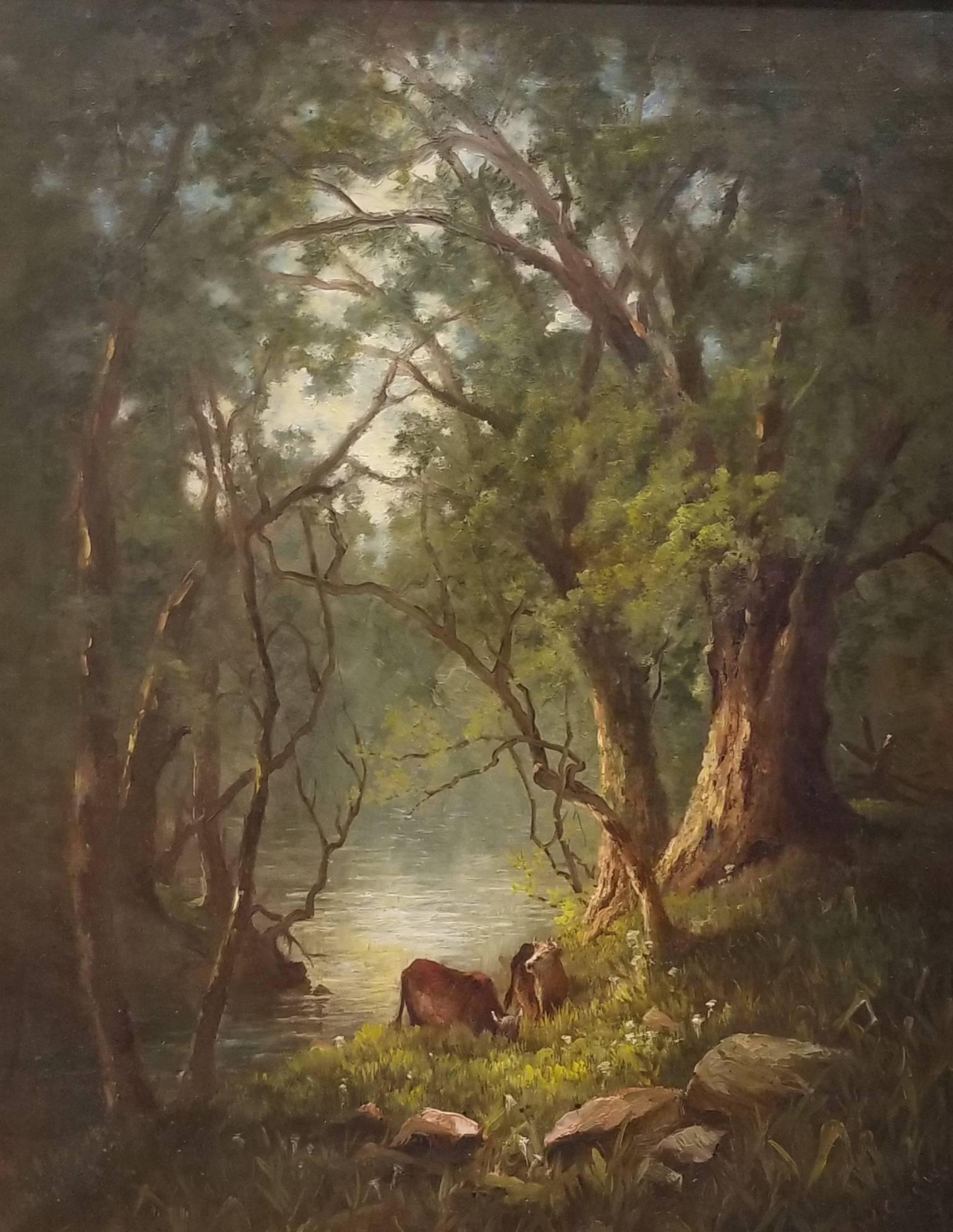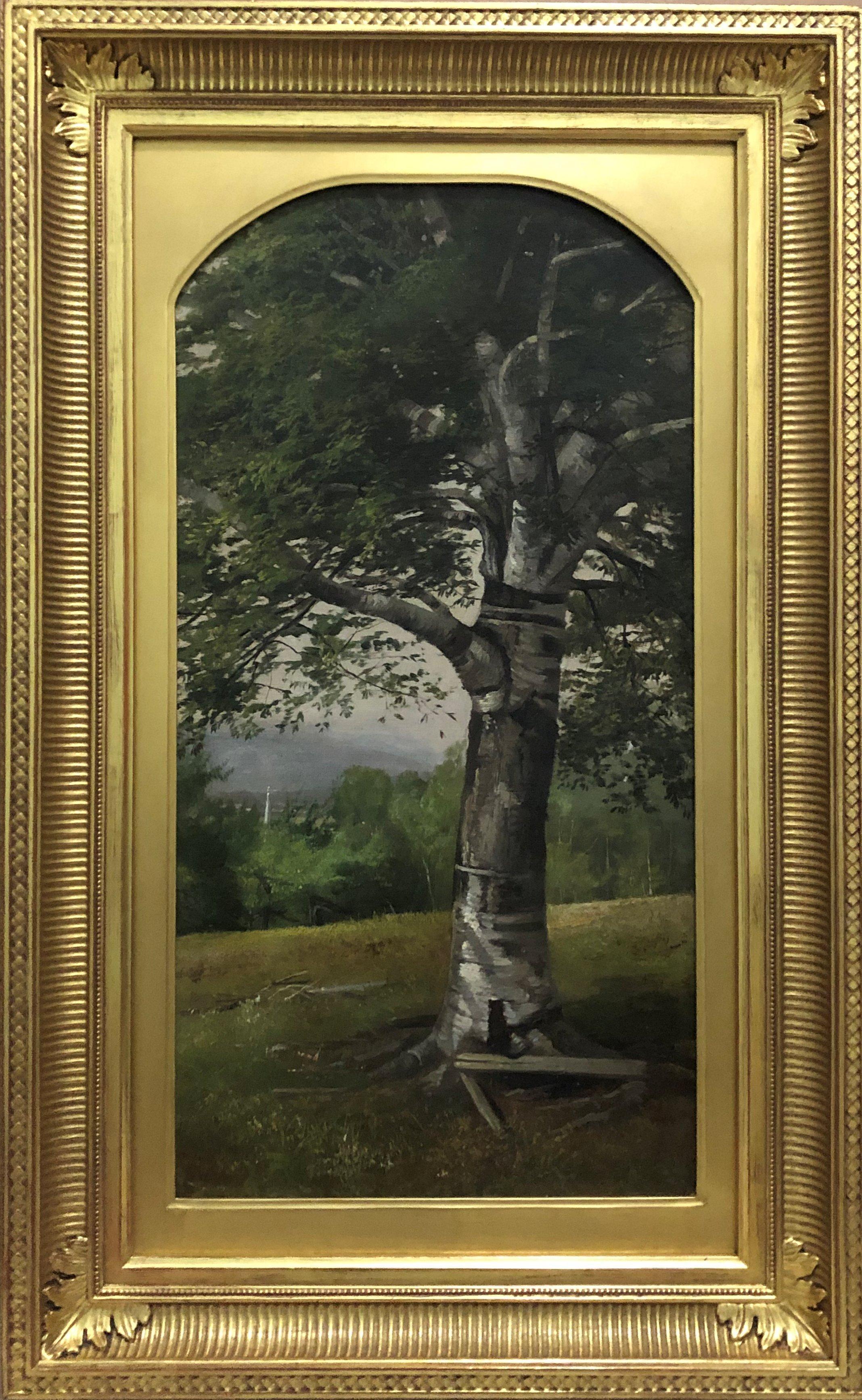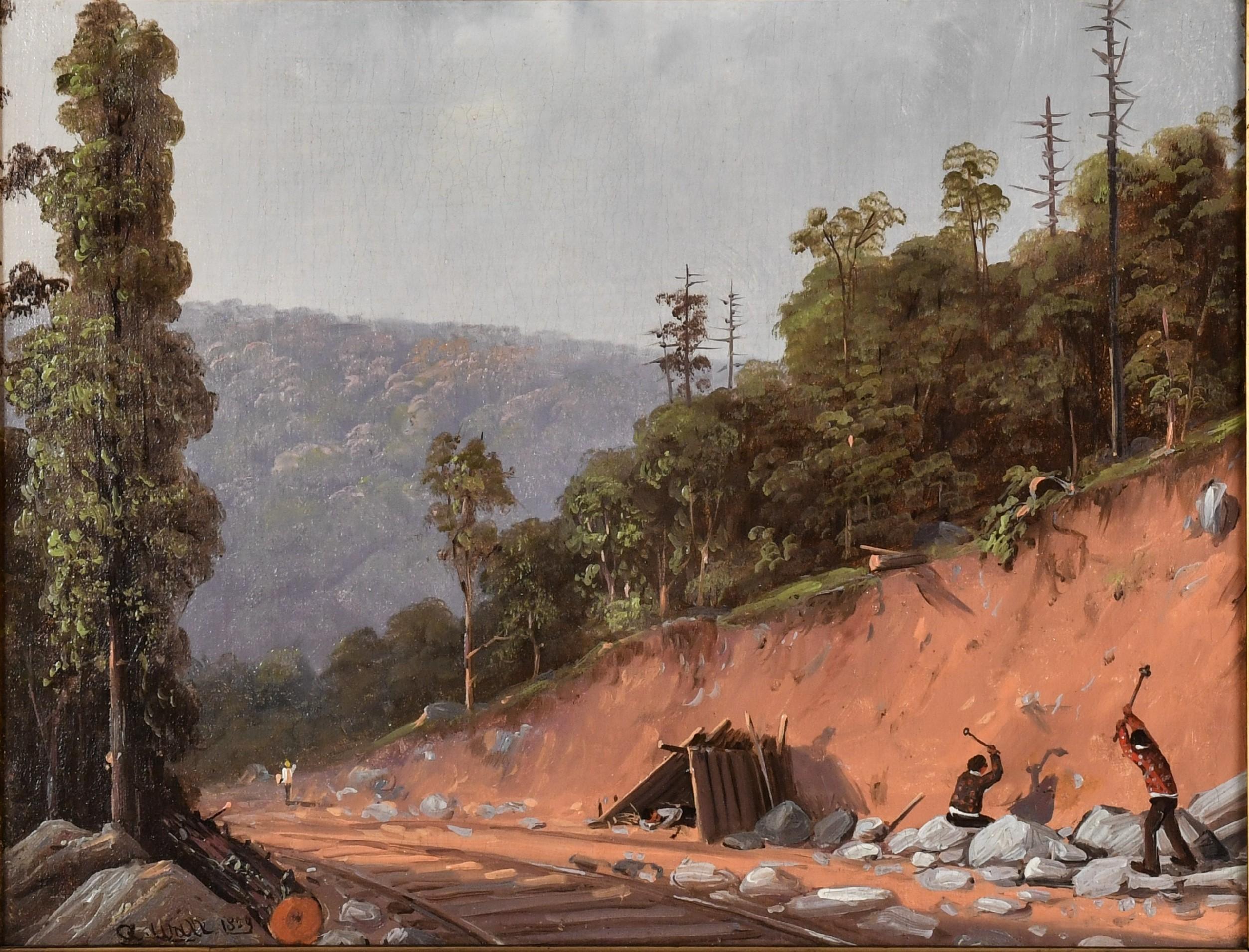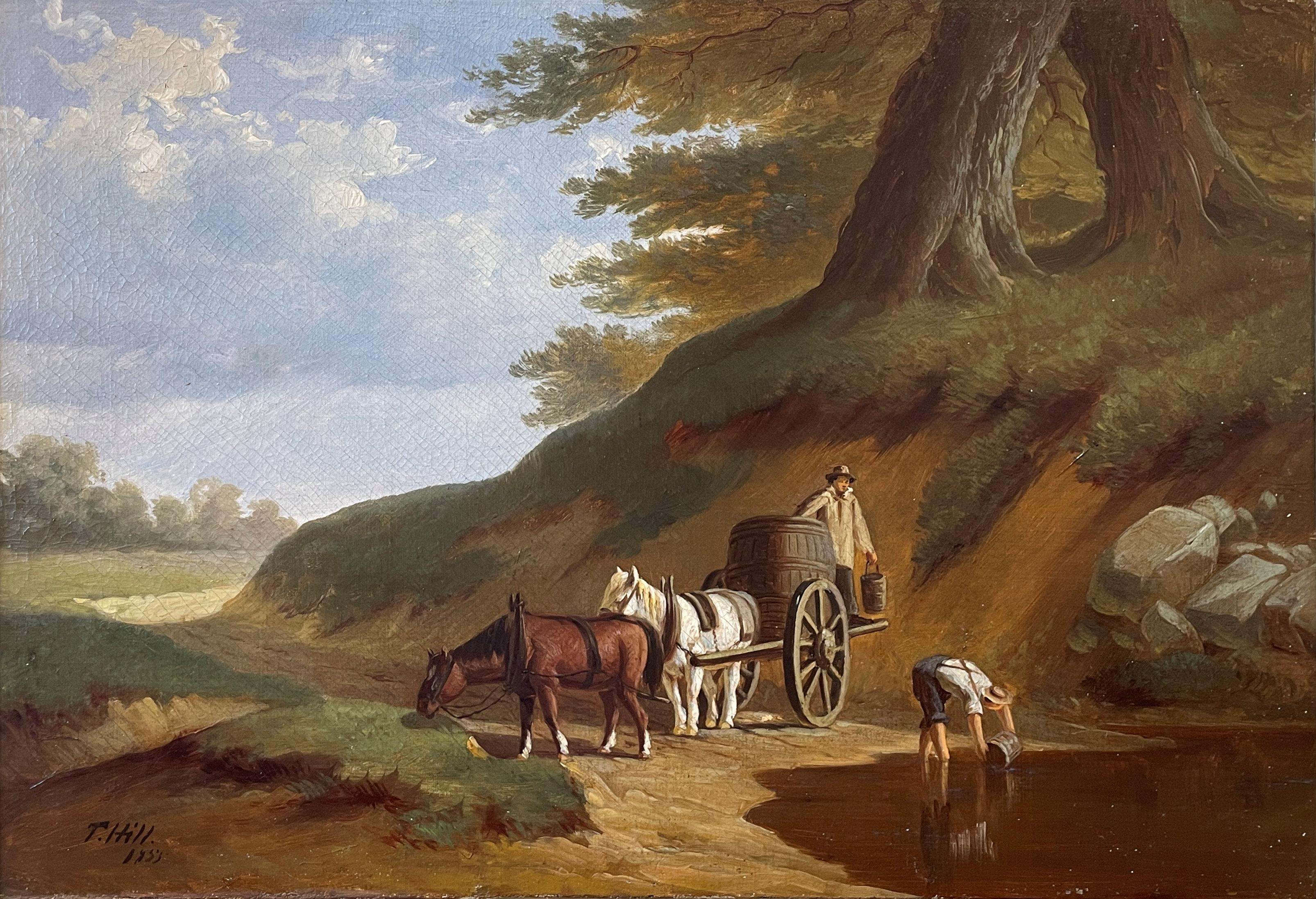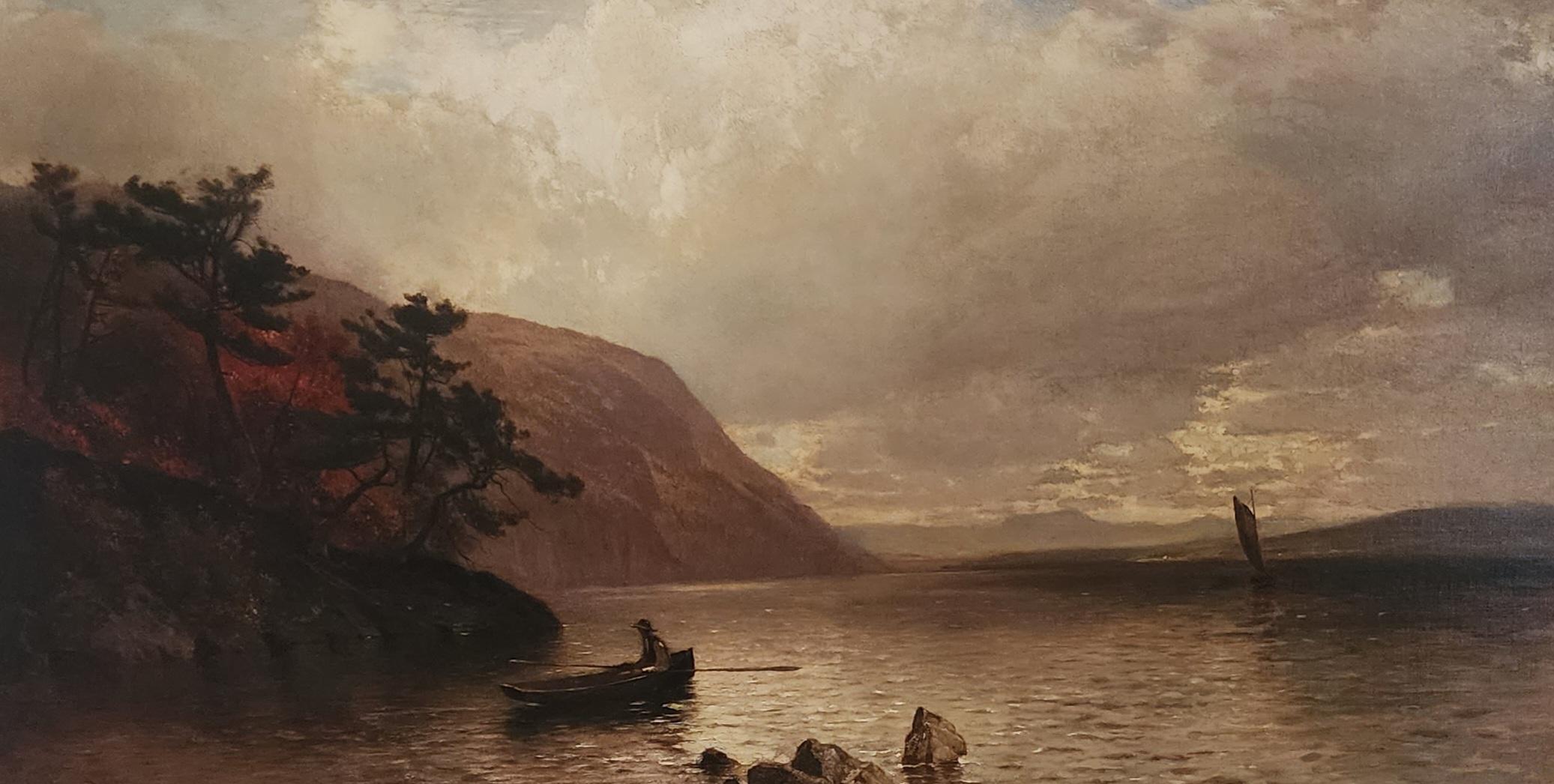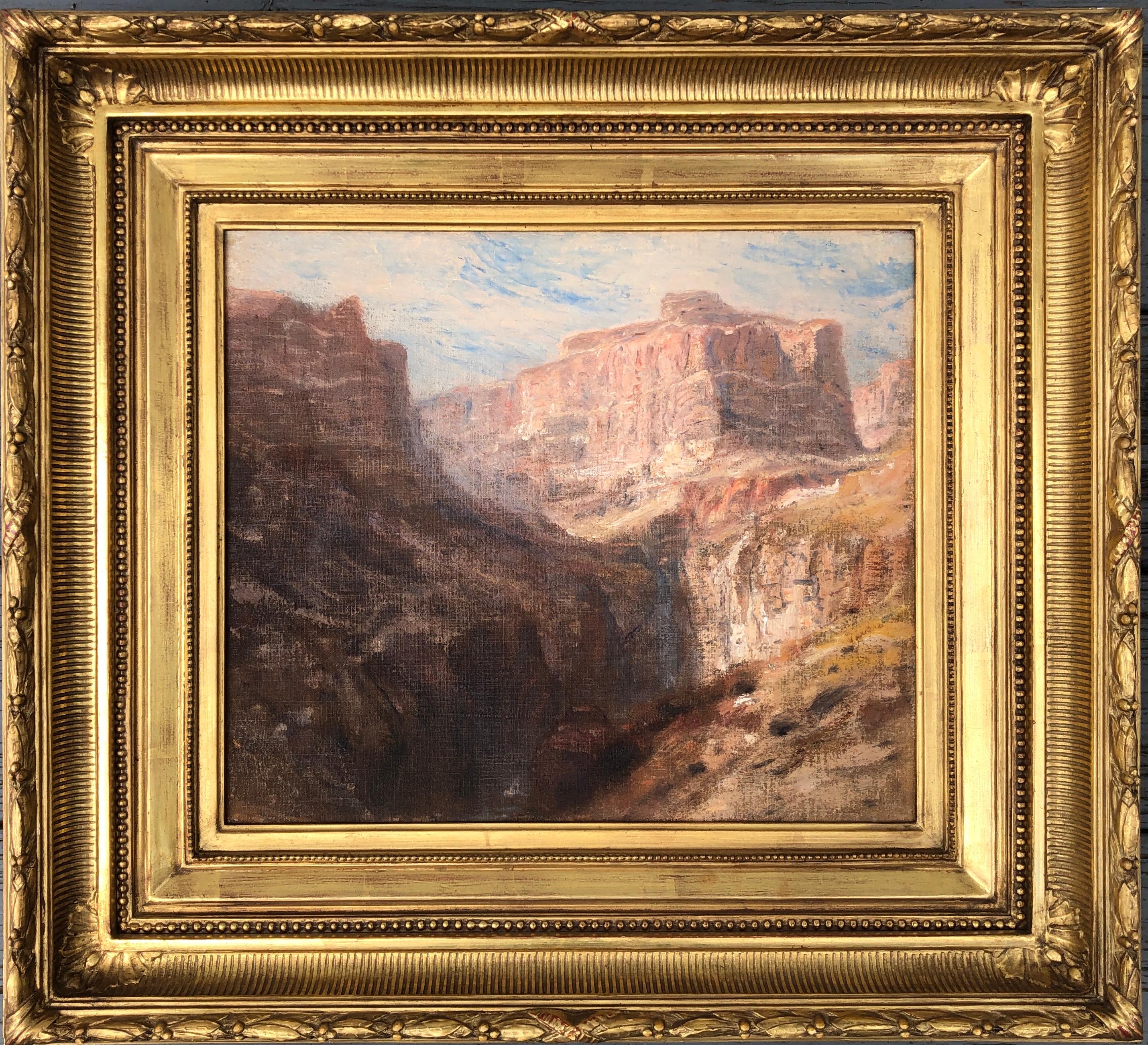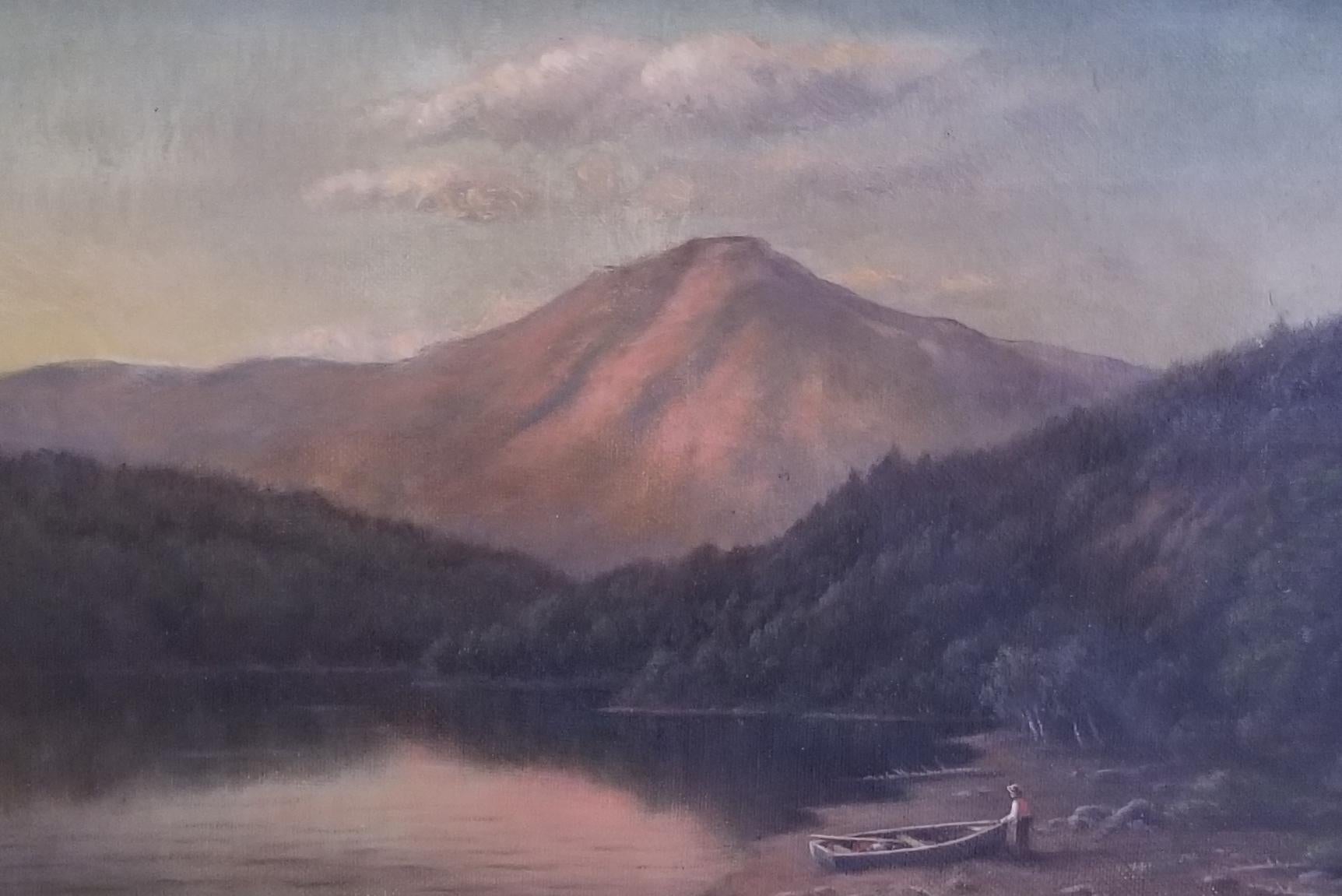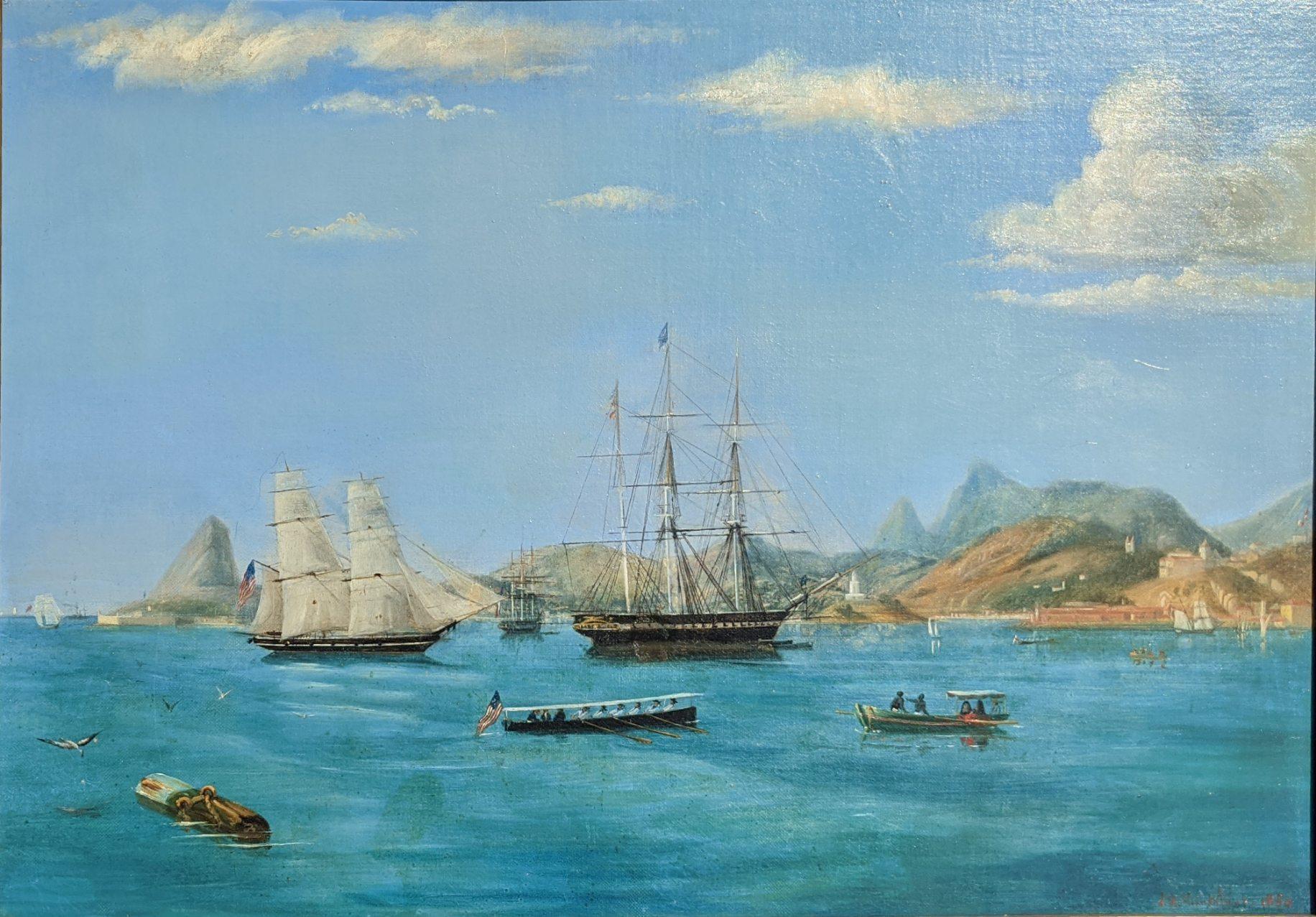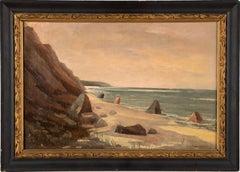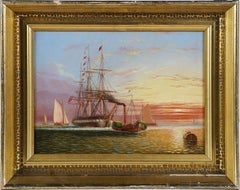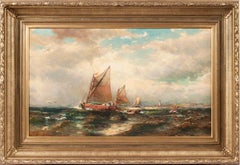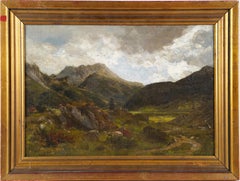
Antique American School Lush Summer Mountain Landscape Oil Painting
Want more images or videos?
Request additional images or videos from the seller
1 of 10
UnknownAntique American School Lush Summer Mountain Landscape Oil Painting1880
1880
About the Item
- Creation Year:1880
- Dimensions:Height: 19 in (48.26 cm)Width: 26 in (66.04 cm)Depth: 2 in (5.08 cm)
- Medium:
- Movement & Style:
- Period:
- Condition:
- Gallery Location:Buffalo, NY
- Reference Number:1stDibs: LU139210404332
About the Seller
4.9
Platinum Seller
These expertly vetted sellers are 1stDibs' most experienced sellers and are rated highest by our customers.
Established in 1970
1stDibs seller since 2015
2,367 sales on 1stDibs
Typical response time: 1 hour
More From This SellerView All
- Antique American School Impressionist Sunset Hudson River School Oil PaintingLocated in Buffalo, NYAntique American Hudson River School sunset landscape oil painting. Oil on canvas, circa 1874. Signed in monogram. Housed in a giltwood frame. Image size, 30L x 22H.Category
1870s Hudson River School Landscape Paintings
MaterialsCanvas, Oil
$1,436 Sale Price20% Off - Antique American Impressionist Hudson River School Coastal Seascape Oil PaintingLocated in Buffalo, NYAntique impressionist painting of a coastal seascape. Oil on canvas, circa 1900. Signed illegibly. Framed. Image size, 18L x 12H.Category
1890s Hudson River School Landscape Paintings
MaterialsCanvas, Oil
$746 Sale Price25% Off - Early Antique American School New England Sunset Sailboat Marine Oil PaintingLocated in Buffalo, NYUp for sale here is a really impressive mid 19th century painting. Very fine quality and great color! Unsigned. Framed. Image size, 13 by 17.Category
1850s Hudson River School Landscape Paintings
MaterialsCanvas, Oil
$3,600 Sale Price20% Off - Antique American Hudson River School Luminous Sunset Western Oil PaintingLocated in Buffalo, NYAntique American impressionist western landscape oil painting. Oil on canvas. Framed. Image size, 17L x 9H.Category
1880s Hudson River School Landscape Paintings
MaterialsCanvas, Oil
- Antique American Hudson River School Panoramic Sunset Landscape Framed PaintingLocated in Buffalo, NYAntique American school sunset landscape oil painting. Oil on canvas. Framed.Category
1890s Hudson River School Landscape Paintings
MaterialsOil, Canvas
- Romantic American School Fall Forest Interior Impressionist Framed Oil PaintingLocated in Buffalo, NYAntique American impressionist fall forest oil painting. Oil on canvasboard. Finely painted and housed in a period giltwood frame.Category
1890s Hudson River School Landscape Paintings
MaterialsCanvas, Oil
$796 Sale Price20% Off
You May Also Like
- On The MohawkBy William OngleyLocated in Saratoga Springs, NYSigned lower right. A landscape and marine painter, William Ongley was born in England in 1836 and came to America with his family and settled in New York. His art studies took him ...Category
Late 19th Century Hudson River School Landscape Paintings
MaterialsCanvas, Oil
- "Birch Tree in Maine, " Hudson River School Antique Landscape, White MountainsBy Harrison Bird BrownLocated in New York, NYHarrison Bird Brown (1831 - 1915) Birch Tree in Maine, New England, 19th Century Oil on canvas 25 x 13 1/8 inches Initialed lower left Provenance: Portland International Galleries, Maine Mr. and Mrs. Walter M. Jeffords, Jr., Saratoga Springs, New York and Lexington, Kentucky (President of Brooklyn Borough Gas Company) Private Collection, Chicago Exhibited: Portland Maine, Portland Museum of Art, 58 Maine Paintings 1820-1920: Selections from the Collection of Mr. and Mrs. Walter M. Jeffords, Jr., May 20 - June 20, 1976, cat. no. 11. The above catalogue listing this vertical landscape will be included with your purchase. "Mr. Brown has succeeded fully in accomplishing that which Mr. John Ruskin, in speaking of J. M. W. Turner's sea views, said no painter had yet accomplished; that is, the representation of the creamy foam which the storm lashes up from the waves along a rocky shore." Harrison Bird Brown was born in 1831 in Portland, Maine, and is best known for his White Mountain landscapes and marine paintings of Maine...Category
Late 19th Century Hudson River School Landscape Paintings
MaterialsOil, Canvas
- Seascape by George Herbert McCord (American, 1848-1909)By George Herbert McCordLocated in New York, NY"Seascape," by Hudson River School artist George Herbert McCord (1848-1909) is oil on canvas and measures 18.07 x 30.13 inches. The work which comes from a private collection in Birmingham, Alabama is signed “G.H. McCord A.N.A.” at the lower left. The work is framed in a beautiful, period appropriate frame, and ready to hang. A member of the second generation of Hudson River School painters, George Herbert McCord is known for his atmospheric landscape and marine paintings which capture a variety of locales and are executed in a variety of media—including oil, pastel, and watercolor. McCord was born in 1848 in New York City, where he lived and worked his entire life. After 1883, he kept an additional studio in Morristown, NJ. McCord traveled throughout North America, painting in the Berkshire, Adirondack and Laurentian mountain ranges, the Hudson River Valley, the Coast of New England, the Upper Mississippi, and Florida, which had become popular among Eastern vacationers. He was among a select group of artists commissioned by the Santa Fe Railroad to paint the Grand Canyon, and also participated in a special painting excursion to the Erie Canal. His travels in Europe were equally expansive, taking him to England, Scotland (having been commissioned by Andrew Carnegie to paint the scenery around his castle there), France, the Netherlands, and Italy. McCord was well-educated, having attended Claverack College amidst the Catskills in Claverack, NY, which provided instruction in classical, French, German, English, music, painting, military, commercial, telegraphic and agricultural studies. He also studied with the accomplished painter and inventor of Morse code, Samuel F.B. Morse, and with the Scottishborn landscape painter, James Fairman. McCord was active in numerous art clubs and institutions in New York, including the National Academy of Design, which elected him an Associate member in 1880, the American Watercolor Society, the Brooklyn Art...Category
19th Century Hudson River School Landscape Paintings
MaterialsOil, Canvas
- "Building the Allegheny Railroad, Pennsylvania" Alfred Wall, Scalp Level SchoolLocated in New York, NYAlfred S. Wall (American, 1825-1896) Untitled (Building the Railroad), 1859 Oil on canvas 14 1/2 x 18 1/2 inches Signed and dated lower left For Christmas, 2008, the Pittsburgh Post-Gazette featured Alfred Wall's painting, Old Saw Mill from the collection of the Westmoreland Museum of American Art in Greensburg, PA. It was painted in 1851 in the town of Lilly, Pennsylvania in the Allegheny Mountains. The newspaper description stated that "though the saw mill is long gone, it still conveys all the warmth and coziness of this time of year. The article, written by Patricia Lowry, continued: At first glance, Alfred S. Wall's painting of a saw mill in snowy woods triggers nostalgia for the coziness of a log cabin, the smell of a wood-burning fire and the warming of chilled hands and feet beside it. But as sentimental as it seems on the surface, Mr. Wall's painting has a deeper and unexpected context. This is more than a painting about sled-riding children and early industry planted in the middle of virgin forest. Intended or not, this is a painting about conquering the great divide of the Allegheny Mountains. For the third consecutive year, the Post-Gazette features a winter-scene painting on the cover of the Christmas Day newspaper. This year's painting, Old Saw Mill, was selected by co-publisher and editor-in-chief John Robinson Block and executive editor David Shribman during a visit to the Westmoreland Museum of American Art in Greensburg. Mr. Wall, listed as a portrait painter in the 1850 census, was about 26 when he painted Old Saw Mill in 1851. The self-taught artist was born in Mount Pleasant, Westmoreland County, to William and Lucy Wall, who'd emigrated from England around 1820. An artistic sensibility ran in the family: William was a sculptor who carved ornate tombstones here; Alfred's children, A. Bryan and Bessie, were landscape painters, as was Alfred's older brother, William Coventry Wall. For more than a century the Walls formed a prominent art dynasty in Pittsburgh, and Alfred, eventually a partner in the city's most prestigious art gallery, was well known as a painter, dealer and restorer. In Old Saw Mill, two wood cutters, each holding an axe, meet outside the mill; one points in the direction of the forest. On the other side of the stream, one child pulls another down the hillside on a sled. Just behind the hill's slope, the roof of a building appears, perhaps the home of the sawyer. The luminous, late afternoon light comes from the northwest, casting lengthening shadows on the snow under a darkening sky. The saw mill in "Old Saw Mill" likely would have been impossible to track down had Mr. Wall, presumably, not written on the back of the painting: "old saw mill near Jct. 4, Portage RR, Pa." "There was no Junction 4," said Mike Garcia, park ranger at the Allegheny Portage Railroad National Historic Site, about 90 miles east of Pittsburgh near Gallitzen, Cambria County. "But there was an Inclined Plane No. 4 at Lilly, and there was a saw mill there." In fact, there were at least six saw mills at Lilly over the years, said longtime resident Jim Salony, president of the Lilly-Washington Historical Society. But when he saw an image of the painting, Mr. Salony had no trouble coming up with a location. While there are no known photographs of the saw mill, he believes it stood near the intersection of Portage and Washington streets, next to Bear Rock Run. Mr. Salony, retired academic dean at Mount Aloysius College, didn't know exactly when the mill was torn down, but it's been gone since at least the late 1800s. He was pleased to learn of the painting, even though that knowledge came too late for inclusion in a new book about Lilly, The Spirit of a Community, for which he served as primary author and editor. It runs to more than 700 pages. For a little town -- population 869 last year -- Lilly has a lot of history. Nestled in a bowl on the western slope of the Allegheny Mountains about 3 miles south of Cresson, Lilly was first settled in 1806 by Joseph Meyer and his family, who named their 332-acre land patent Dundee. Although the Meyers had left by 1811, other settlers followed, but the community didn't flourish until the 1830s, when the Allegheny Portage Railroad began its 23-year-run through the town. For 200 years the Alleghenies had stood as an impediment to trade and travel between Pittsburgh and the east. A canal from Philadelphia to Pittsburgh would change that and compete with New York's Erie Canal. But a portage railroad would have to be built, on which teams of horses would lead the canal boats over the mountains. Engineer Sylvester Welch began his surveying from the small settlement at Lilly. The railroad would require 10 inclined planes, some quite steep, between Hollidaysburg and Johnstown. To build it, trees had to be cut along a 120-foot-wide right-of-way for 36 miles, along which track and engine houses had to be built. William Brown, who owned the saw mill on Bear Rock Run, built at least one of the engine houses at Inclined Plane No. 4; an 1834 contract also included fencing the dwelling lots at the head and foot of the plane. Lilly is located at what was the foot of Inclined Plane No. 4., giving the community one of its early informal names, Foot of Four. Named in 1883 for Richard Lilly, who'd completed the grist mill there, Lilly had another early name: Hemlock, so dubbed by a Portage Railroad traveler who smelled the bark stripped from the trees at the saw mill. Because there isn't another Allegheny Portage Railroad location like it, where a cut in the mountains opens into a bowl, Mr. Salony thinks it was Lilly that Charles Dickens wrote about following his trip from Harrisburg to Pittsburgh on the Pennsylvania Canal in late March 1842, describing what he saw after emerging from "the bottom of the cut": "It was very pretty while traveling, to look down into a valley full of light and softness, catching glimpses through the tree-tops of scattered cabins; children running to the doors; dogs bursting out to bark, who we could see without hearing; terrified pigs scampering homeward; families sitting out in their rude gardens; cows gazing upward with a stupid indifference; men in their shirt-sleeves looking on at their unfinished houses, planning out to-morrow's work; and we riding onward, high above them, like a whirlwind." To get to Lilly, Mr. Wall may have taken the Pennsylvania Canal from his home in Allegheny City, now the North Side. He'd married young, at 21, to Sarah Carr in 1846, the same year he began his career as an artist. By 1880 they were living in a brick townhouse at 104 (later 814) Arch St., now demolished. Across the river in Pittsburgh he shared a studio at 67 Fourth Ave. with his brother William; they later moved to Burke's Building, today the city's oldest office building at 209-211 Fourth. But often they worked outdoors, sometimes as part of the colony of artists that grew up around painter George Hetzel beginning in the late 1860s at Scalp Level...Category
1850s Hudson River School Landscape Paintings
MaterialsCanvas, Oil
- "Water Stop" Thomas Hill, Hudson River School Landscape with Horses and RoadBy Thomas HillLocated in New York, NYThomas Hill Water Stop, 1853 Signed and dated lower left Oil on canvas 14 x 20 inches Provenance: Arader Galleries, New York Immigrating from England ...Category
1850s Hudson River School Landscape Paintings
MaterialsCanvas, Oil
$9,600 Sale Price20% Off - Delaware GapBy Régis François GignouxLocated in Milford, NHA finely detailed oil landscape of the Delaware Gap attributed to French American artist Regis Francois Gignoux (1816-1882). Gignoux was born in Lyon, France, and began his studies i...Category
Mid-19th Century Hudson River School Landscape Paintings
MaterialsCanvas, Oil
